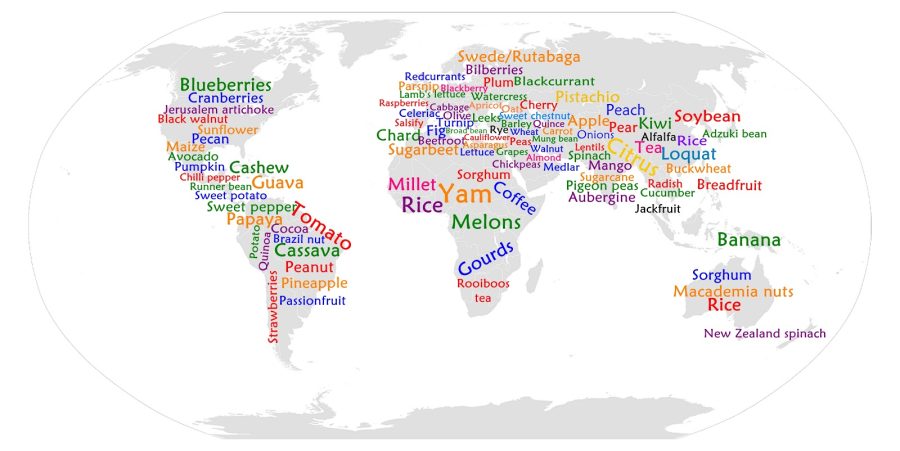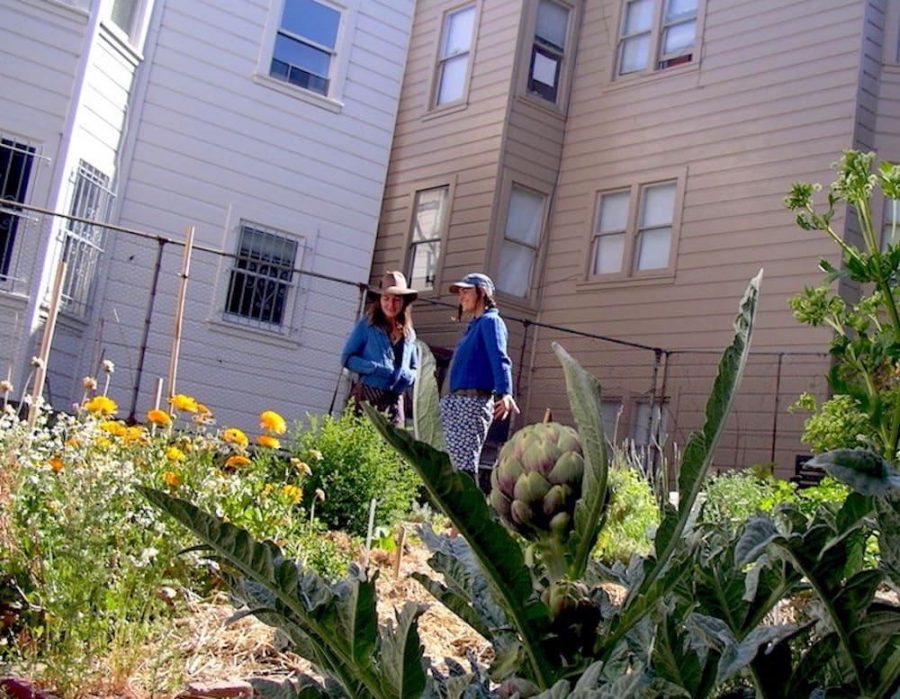Permaculture and emergence, a design to live intentionally.
The future is balancing on precarious tipping points. An acceleration of planetary chaos has many of us waking up to a sense of accountability and desire to live more intentionally and purposefully. Right now we have an important opportunity to harness this momentum to engage in life with increased authenticity and agency.
The process of Emergent Design achieves this by emphasizing conscious engagement, and the exploration and refinement of self. Through engaging consciously, we become an alert observer of our experience and an active participant in the process. Design choices are explicit interactions with the world around us. At the core of design is an intervention within a specific system, with the intent of manifesting or tracking a particular outcome, by using and monitoring an appropriate process unique to the situation.
The process of Emergent Design creates awareness and agility, enabling people to gain more skill in embracing life’s uncertainties. When we are intentional, present and holistic in our thinking, we can release expectations and indeed be proactive in harnessing the opportunities of the present moment. If we accept change, upgrade our outdated modes of operating, and move towards an approach that values and serves life, then we are tapping into powerful possibilities.

Emergent Design means living intentionally: It is a natural way in which we interact with the world around us. It’s how we make decisions every day. Design is a road-map for manifestation. A person who takes part in using an active process, or intends to make decisions is automatically a designer. Anyone involved with a project is an inferred decision maker, project manager, and designer by default. Anything that has more than two steps can be considered a project. However, an actual design requires conscious awareness and interventions.
The more we question our motivation and derive our decision making from conscious personal authenticity and an awareness of our intentions, the more we can develop mindfulness for self-actualization. Through this self-fulfillment, we can maximize our potential as human beings. To do this though we must unlearn counterproductive attitudes, worldviews and socialized norms that developed through negative conditioning.
Emergent Design means being present: Staying present and having a realistic appraisal of the current moment creates authentic connectivity. The groundedness in and acceptance of what is, exactly and intrinsically, is the foundation for any change. In that sense, the first position and ongoing practice of a designer is to be present, centered and connected before, during and after taking action. Routine reflection and observation keep us linked to the present moment and train us to realize emerging opportunities and constraints.
Emergent Design means holistic and regenerative living: The term “regenerative” describes processes that restore, renew or revitalize their sources of energy and materials, creating life systems that integrate the needs of society with the integrity of nature. As designers, we filter our choices by ensuring our direction is towards creating and serving life. Holistic thinking means understanding the parts of something as intimately interconnected and explicable only by reference to the whole. Whole systems thinking focuses on linkages and interactions between these elements. Combining our clear intentions and presence awareness, we become an agent and co-evolutionary for planetary regenerative design.
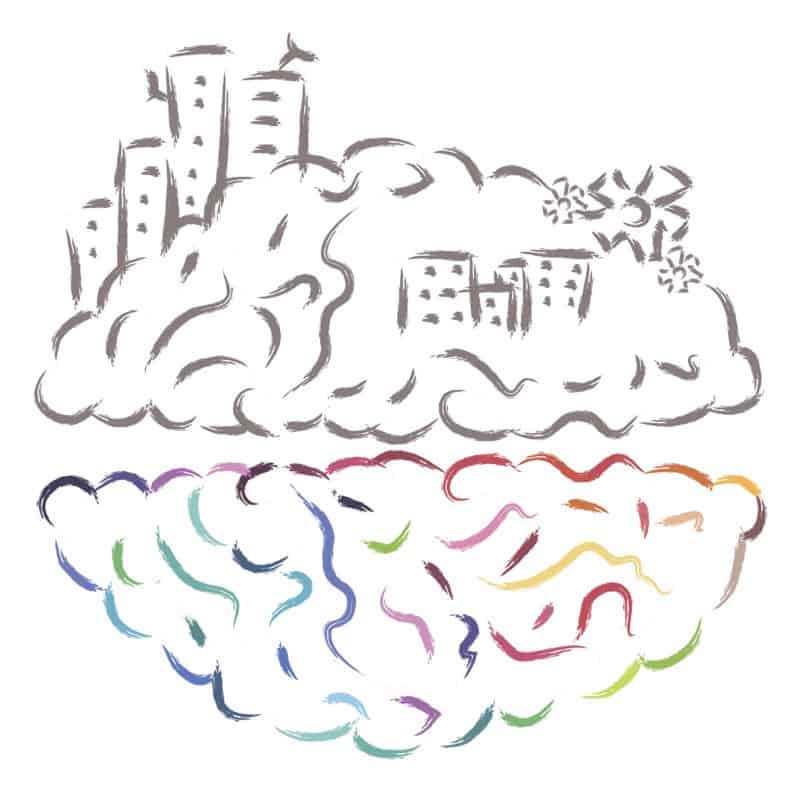
How do we design? Designers use a balance of thought and feeling to generate goals for creating interventions in life. Design thinking utilizes a combination of logic and reasoning with imagination and intuition, to explore possibilities and produce desired results. Design doesn’t always produce the results we want, nor does it necessarily produce a world that supports and nurtures us. There are ways to improve our chances.
I first learned about design as a field by studying ecology and as an activist in the 1990’s. Years later I discovered Permaculture with it’s ethical approach to design, which resonated deeply. In Permaculture all designs get sifted through the ethics of earth care, people care and fair share (access to and distribution of resources.) Permaculture is an example of design that originated via ecologically literate thinkers. I define Permaculture as a whole-systems design approach that utilizes patterns found in nature to create human systems. Whole systems thinking is a holistic type of decision-making that looks at the interrelationships and interconnections of the elements of a system rather than singularly viewing the parts as autonomous. I became so impressed with the holistic tools and thinking Permaculture offered, that in 2004 I began working with Liora Adler and Andrew Langford designing and developing Gaia University, to offer Permaculture based degree and diploma programs.
It’s important to recognize that not all design is holistic. The design field has massive application in engineering, software, the fashion industry and many other sub-fields. So many designs are botched because of narrow-mindedness. The state of consciousness, worldviews, skill, and tools of the designer certainly impacts the design process and outcomes. The entire world is cluttered with failed design attempts. Just because you’re using cool tools doesn’t mean you’ll get cool results. That goes for Permaculture Designers also. Be cautious and mindful.
Design Patterns: From my experience working with design for over twenty years in the non-profit and higher education sectors, the two most common design approaches historically can be a degree of predict and control, and people using no system at all. Predict and control is a type of thinking that emerges from too much analysis. This decision making utilizes conscious planning that doesn’t include the un/learning and assessment of motivation, systems thinking or agility.
Predict and control style designs often create failed results with out of date thinking and burned out relationships. It’s easy to fall into this pattern. Be cautious about getting stuck in your process and trying to force outcomes. Be very diligent and aware of how your worldviews, perceptions, and expectations are influencing your process.
On the other side, no design approach often creates minimal effect or progress and perpetuates conditioned destructive responses. I have so many students tell me that they don’t want to use a process. I tell them that their lack of process is their chosen process. It’s unavoidable folks. You are using a process. A program. An operating system. You have the choice to do it unconsciously or consciously. What I have found more recently is that people do have a chosen process, they just don’t know how to articulate or put words to their semi-conscious effort.
Neither extremes are sustainable or life-affirming. They both tend towards producing botched outcomes. Methodologically only the first is a type of design, and the latter is a process until the design itself can be expressed. Design is on an evolutionary journey towards combining and balancing analysis with intuition.
I’ve personally taken all the tools I’ve learned in my career as a Permaculture designer and added the wisdom from my lifetime of intra/interpersonal studies, to create my own design approach appropriate for me, which I call Emergent Design. It combines the tools and ethics of Permaculture with the presence and mindfulness of states of awareness, a.k.a. conscious engagement.
I encourage all of my students to explore at least ten different design models, to experiment with as many tools and types of design thinking as possible, and then to create your own process that works for you. Consider, what is your natural flow? What were you using before you learned about design? Combine all of that awareness into an appropriate honed bundle of tools to carry around in your toolbox.
Design History: Technically, the transition from predict and control shifted first to logframe designing, which was holistic in its attention to engaging in a full design process that included responsiveness through feedback loops, integrated at the end of phases, and later added ongoing management and tweaking. The field of design then transitioned towards more flexible and agile successive approximation methods (SAM’s). In a moment I’ll review each of these models that can be added to your tool belt.
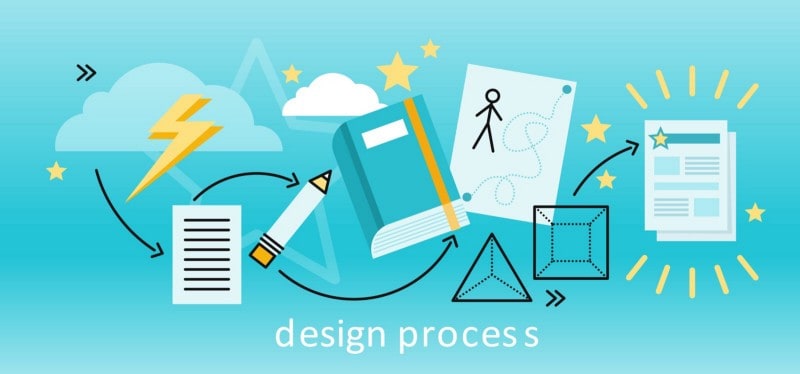
Design Methodology: Models support design work resulting in more optimized solutions. Using intentional methods help us to achieve better experiences for the designers, the projects/products/services, the users, and the environments and systems which rely on the outcome of designs. There are variations of methodologies useful to have in the designer’s toolkit. Some are more assessment/analysis based and others more intuitive/agile; however, when we use them together in appropriate circumstances, we have an integrative/emergent approach. The following models are part of the Gaia University toolkit, prepared by Andrew Langford for the online Orientation. As the Director of Advisory Services for the University, I deconstructed these tools and revised them in 2016 for this article.
Instruction Systems Designs — ISD Models that create step-by-step instructional processes. Many originate from the ADDIE model[1] with the five phases: analysis, design, development, implementation, and evaluation. As a field, instructional design is historically and traditionally rooted in cognitive and behavioral psychology.[2]
ADDIE
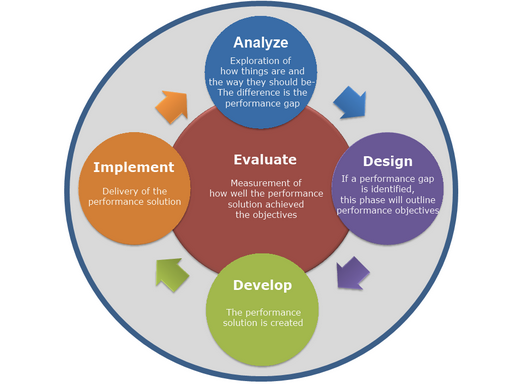
Logical Framework — A type of ISD used as a tool for improving the management, monitoring, and evaluation of projects. The logframe is a way of structuring the main elements in a plan and highlighting the logical linkages between them. GOBRADIMT, GaSADIMET and OBRADIMET are spin-offs of the ADDIE template.[3]
GaSADIMET [4]

OBREDIMET [5]

Outcome Mapping — A progress measurement system designed by grant-making organizations. I became trained in this process in 2004 by the International Development Research Centre. The process consists of a lengthy design phase followed by a cyclic record-keeping period for planning, monitoring and evaluating development initiatives to bring about sustainable social change.[6]

Iterative Processes — The act of repeating a process, either to generate a spiraled learning experience of unbounded sequences of outcomes or with the aim of approaching a desired goal, target or result. Each repetition of the process is also called an “iteration,” and the results of one iteration become the starting point for the next iteration.
Scrums Iteration [7][8]

Successive Approximation Model — A process that addresses performance through small iterations rather than perfectly executed large steps. SAM challenges the notion of moving through linear methods. SAM focuses more on experience and engagement over content organization and presentation of information. [9]
SAM Model [10]

Many other design models follow more natural and indigenous wisdom. Be sure to check out the following models: Design Web, Theory U, Dragon Dreaming and the 8 Shields.
~ Comparing the Models and Application

The above assessment compares linear/traditional vs. agile design and Laura Kaestel and I’s contribution to further developing the field of Emergent Design. This comparison of these three meta-fields is aimed to show that traditional design is very analytical, agile design as intuitive and Emergent Design as integrative/evolutionary.
The above models shared in this article vary in their linear/analytical versus iterative/intuitive design flows. It’s important to understand them as tools rather than complete processes. In different situations, different mechanisms may apply. In Gaia University’s project design module, Andrew Langford and I teach that these methods can also be combined to create a new or appropriate process that matches the needs of the designer(s) or design project.
It’s important to understand models as tools rather than complete processes. In varying situations, different mechanisms may apply. Sometimes it’s necessary to expand outside of or discard parts of a process if it becomes limiting. Try not to get stuck in one-size fits all approach. Be creative. Sometimes it’s necessary to expand outside of or discard a process if it becomes limiting. Agility needs to be considered not only for the scope of the project but also the process.
Models support design work resulting in more optimized solutions. Using intentional methods help us to achieve better experiences for the designers, the projects/products/services, the users, and the environments and systems which rely on the outcome of designs. I’ve provided variations of methodologies helpful to have in our designer’s toolkit. When we use them together in appropriate circumstances, we have an integrative approach.
I suggest experimenting with as many styles and tools as possible. Refine your technique. Merge what works for different models. Recycle steps that don’t feel appropriate. Apply a unique approach to each situation. Enjoy establishing a satchel of design tools that you can whip out to bedazzle your life.
We can consciously choose how to participate in life. We can forecast, create and steer the direction of our collective experience by applying appropriate interventions within a system, guided by our center and within the present. We have the opportunity to engage with a participatory and regenerative worldview that serves life. It is our responsibility to consciously choose to participate on this path as active change agents.
I’ve written several articles on assessing the scale and scope of design as a field, exploring the evolution of design thinking and comparing various design approaches. I dive into understanding emergent and holistic design frameworks and principles. I highly encourage you to check out these bonus articles:
Cultivating the Designer’s Mind
Emergent Design ~ Finding the White Tiger
[1] ADDIE— http://edtc6321t2.pbworks.com/w/page/58812937/ADDIE%20Overview
[2] Definition drawn from https://en.wikipedia.org/wiki/Instructional_design
[3] Definition drawn from https://en.wikipedia.org/wiki/Outcome_mapping
[4] Andrew Langford — GaSADIMET— http://gel.gaiauniversity.org/mod/book/view.php?id=637
[5] Andrew Langford — OBREDIMET— http://gel.gaiauniversity.org/mod/book/view.php?id=6377&chapterid=4512
[6] Rapid Outcome Mapping — Rapid Outcome Mapping Approach and Project Management for Policy Change. Pellini, Arnaldo. https://www.projectsmart.co.uk/the-rapid-outcome-mapping-approach-and-project-management-for-policy-change.php
[7] An Alternative to Waterfall — Scrums Reference Card, James, Michael. CollabNet Inc. http://www.collab.net/sites/default/files/uploads/CollabNet_scrumreferencecard.pdf
[8] https://www.collab.net/sites/default/files/uploads/CollabNet_scrumreferencecard.pdf
[9] http://www.alleninteractions.com/sam-process
[10] SAM Model — Iterative e-Learning Development with SAM. http://www.alleninteractions.com/sam-process


